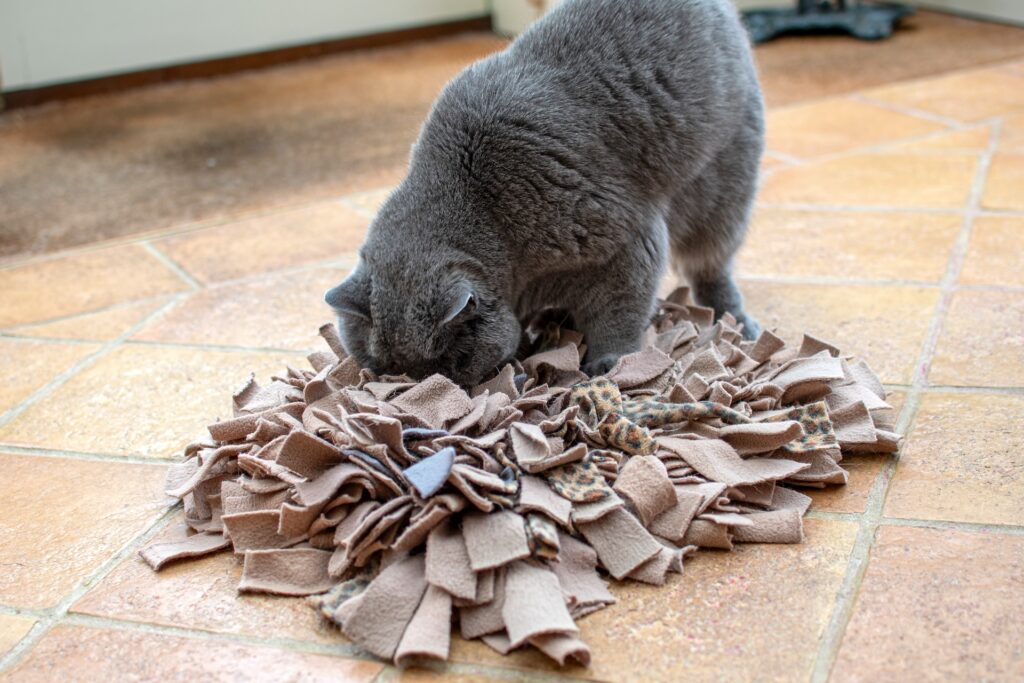Preparing Your Home and Welcoming Your New Cat: A Step-by-Step Guide
 Copyright Caroline Clark
Copyright Caroline ClarkStep One: Preparing for the new arrival
- Follow the principles laid out in the Five Pillars of a Healthy Feline Environment.
- Make a shopping list of all the things required.
- Follow the guidance and video demo for Cat Carrier Training (https://petcourses.co.uk/free-resources/training-your-cat-to-accept-their-carrier) to gain tips about how to make their journey more positive.
- Create a Refuge Room (https://petcourses.co.uk/free-resources/creating-a-refuge-room-for-cats).
- Conduct a review of the house to determine whether there are any areas that require attention (e.g. escape, trailing electrical wires and and other health and safety risks).
A basic shopping list of necessary items
- A food bowl (not a double diner or plastic)
- Activity feeders (which can be homemade)
- Suitable water receptacles (e.g. large ceramic dishes)
- A nutritious food suitable for the cat’s life stage (to avoid gastro-intestinal upsets, the diet should remain the same or if necessary, changed gradually)
- A couple of litter boxes and the cat’s current litter. Changes can be made gradually if necessary
- A selection of toys
- A brush for grooming purposes
- A suitable cat carrier
- A comfortable bed and bedding
- Somewhere to scratch and climb
Step Two: Welcoming your newcomer
- On arrival place them in the refuge room.
- Place the carrier on the floor close to hides and high up places. Leave the door open and let them come out in their own time.
- To facilitate acceptance of the new environment, ask the shelter/breeder to provide a piece of bedding that contains their familiar scent and refrain from washing it until they have settled in. You can also ask them to harvest the cat’s scent and on (or just before) arrival, transfer it to their refuge room.
- Stick with the same type of litter and food that the cat is used to and, if necessary, make changes gradually.
- Allow them a day or two to get used to their new surroundings.
- Don’t overwhelm or crowd them. Enter the room to provide food and observe their responses. Allow them to lead interactions.
- Once they appear relaxed, make sure all escape routes are secured and accompany them on an excursion into the rest of the house.
- The cat should be allowed access back to the refuge room and kittens should be regularly returned for rest and toileting.
- Follow the accepted protocols when introducing a cat to a home with a resident dog or cat.
Step Three: Introducing them outdoors
- If you intend giving the cat freedom to roam freely, don’t be tempted to do this too soon. It’s generally recommended to wait for a couple of weeks (earlier for homes that have enclosed, escape proof outdoor spaces).
- When the time arrives, choose a quiet day and fine weather, accompanying them in the garden. Do this prior to a meal so as to encourage them to come back for food.
- Don’t leave kittens unaccompanied before they reach six months of age and, to prevent unwanted kittens, get them neutered before they are allowed to go out unsupervised.
- Teaching a recall is always a good idea so that a cat will come when called.
- If the cat hasn’t already been vaccinated, treated for parasites or microchipped, a trip to the vets will be necessary. If a cat has already been microchipped it’s important to get information updated on the relevant data base*.
*A microchip is a small implant, containing a unique code that is inserted under the cat’s skin. If a cat goes missing the microchip could be scanned and matched to the cat’s contact details, giving them the best chance of being identified and returned to their caregiver. At the time of writing this book the British Government announcement that all pet cats in England must be microchipped before they reach twenty weeks of age. The law comes into effect from June 2024.